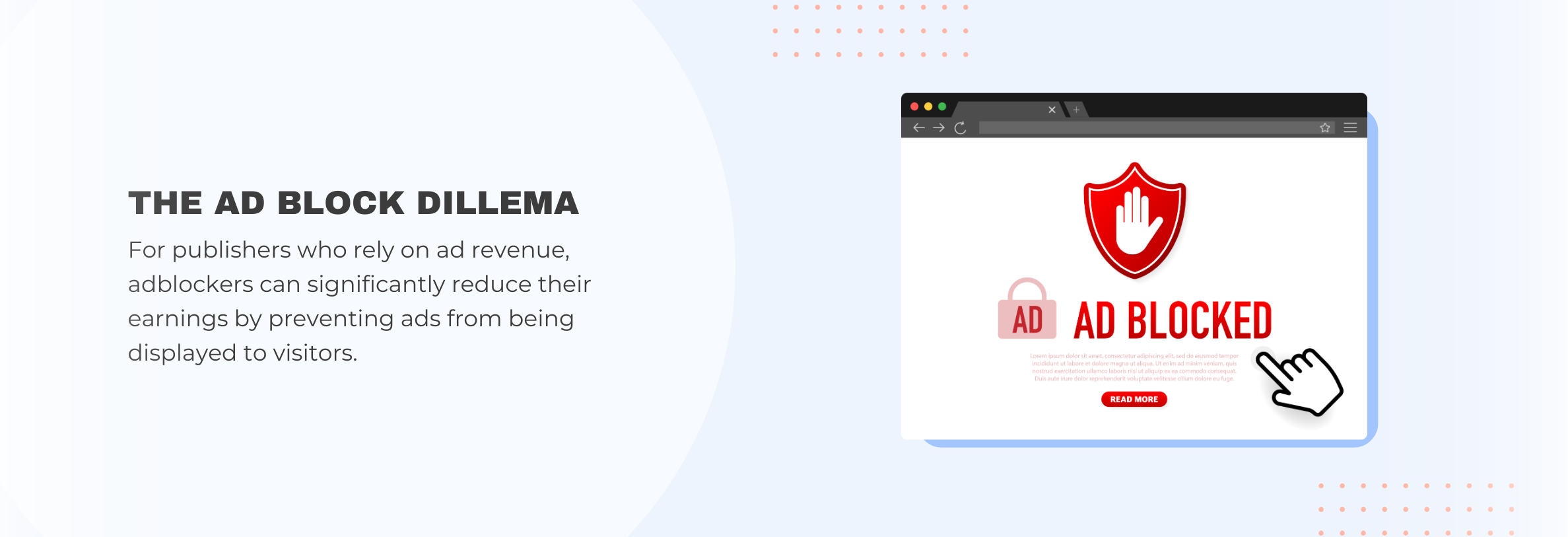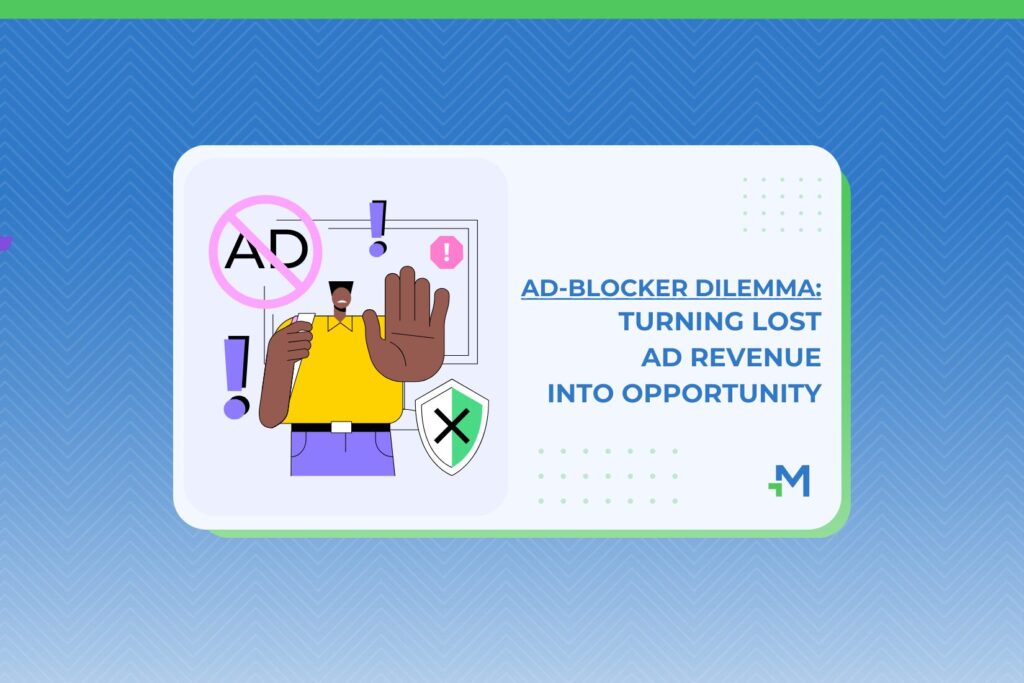In 2025 we don’t leave money on the table. Discover effective anti-adblock solutions for publishers to protect ad revenue and maximize ad monetization.
The increasing adoption of ad blockers presents challenges for both advertisers and publishers, prompting a shift towards less intrusive and more user-friendly advertising strategies. However, this is not the only solution.
Today, publishers can’t afford to ignore the ad-blocking trend and must rethink their approach toward more friendly ad experiences that respect user preferences.
Keep reading if you want to get the gist with ad blockers and explore solutions to help you address this challenge.
How Does Ad Blocking Work?
An adblocker is a software tool or browser extension that prevents ads from displaying on websites. It works by filtering out requests from ad networks, blocking scripts that deliver ads, or even removing ad elements from a webpage.
Many users install adblockers to avoid intrusive ads, speed up page loading times, or protect their privacy from tracking.
Here’s how ad blockers work:
- Filter lists: They use a set of rules to recognize and block ads. These lists are updated regularly to keep up with new ad formats.
- Blocking ad requests: When you open a website, your browser loads different elements, including ads. Ad blockers stop these ad requests before they reach the ad server.
- Scanning page content: Some ad blockers check the website’s code to spot and block ad placements.
- Hiding elements: If an ad still loads, the ad blocker hides it so you don’t see it.
- Blocking scripts: Many adsrely on JavaScript to load. Ad blockers can disable these scripts to stop ads from appearing.
What’s Driving the Rise in Ad Blocker Usage?
The first known ad blocker was created in 1996 as a browser extension for Netscape. It was developed by PrivNet under the name “Internet Fast Forward” to give users control over online ads and trackers. Later, in 2022, Ablock popularized the concept, leading to mass adoption.
Initially, ad blockers were used to improve browsing speed and remove annoying ads, but over time, privacy and security concerns became key drivers for their widespread use.
And here’s why:
Disruptive Ads: Pop-ups, autoplay videos, interstitial ads disrupt browsing, making users seek ways to block them.
Excessive ads daily: It’s widely accepted that the number of ads we see a day is somewhere between 4,000 and 10,000.
“While exposure may reach 10,000 ads daily, actual engagement is much lower due to banner blindness, ad fatigue, and selective attention.” – source
Performance impact: Ads can slow down page loading times.
Reduced Data Usage: Ads consume extra bandwidth, which is a concern for mobile users with limited data plans.
Privacy Concerns: Many ads track users’ behavior, raising concerns about data collection and personal security.
Security Risks: Malvertising (malicious ads) can spread malware, making ad blockers a protective measure.
The Impact of Ad Blockers on Publishers
For publishers who rely on ad revenue, adblockers can significantly reduce their earnings by preventing ads from being displayed to visitors. This creates a challenge for websites that depend on advertising to support content creation.

One of the most immediate and tangible effects of ad blockers is the decline in advertising revenue. Many publishers rely on ads as a primary source of income, and when users block ads, impressions and clicks decrease, leading to lower earnings.
Larger media companies may have diversified revenue streams, but small and independent publishers often depend heavily on ads. Ad blockers can make it difficult for these publishers to sustain their operations, leading to potential layoffs or even site closures.
How Publishers Bypass Adblockers to Monetize Ads
To counteract the impact of adblockers, publishers use several strategies:
Implementing Anti-Adblock Solutions
Some publishers use detection tools that identify users with ad blockers enabled and prompt them to disable them or whitelist the website.
Alternatively, many ad tech companies provide anti-ad blocking services that have the capability of overriding ad blocks to help publishers prevent ad revenue loss.
♦ For example, our cornerstone project, ad network PopCash has it’s own anti ad-block code.
Try Server-Side Ad Injection
Some publishers use server-side ad delivery instead of client-side scripts, making it harder for adblockers to detect and block ads.
Get Whitelisted
Ad blocking firms enhance user privacy by filtering intrusive ads through blacklists while allowing approved sites on a whitelist.
Some firms charge publishers to get whitelisted, requiring them to meet specific ad standards. Many ad blockers run “acceptable ads” programs, permitting non-intrusive ads like those without pop-ups or autoplay audio.
Shifting to Less Obvious Advertising
Native ads blend seamlessly with website content and are less likely to be blocked because they don’t look like traditional ads. Since native ads look like content rather than traditional ads, they are often not detected or blocked.
Incorporate Affiliate marketing
Publishers can use affiliate marketing (promoting products with referral or affiliate links) or create sponsored content that provides value while generating revenue.
Subscription and Paywalls
Websites can offer an ad-free experience for a subscription fee or use paywalls to encourage users to support their content.
Ready to Monetize Ad Block Traffic?
Stay proactive, test different approaches, and keep your site’s user experience at the forefront—because when you find the right balance, both your users and your bottom line will benefit. The key lies in striking a balance between maintaining profitability and providing a positive user experience.
Moreover, don’t put all your eggs in one basket. Ideally, you’ll want to have a combination of revenue streams for your website.

The most important thing, though, is to START!
